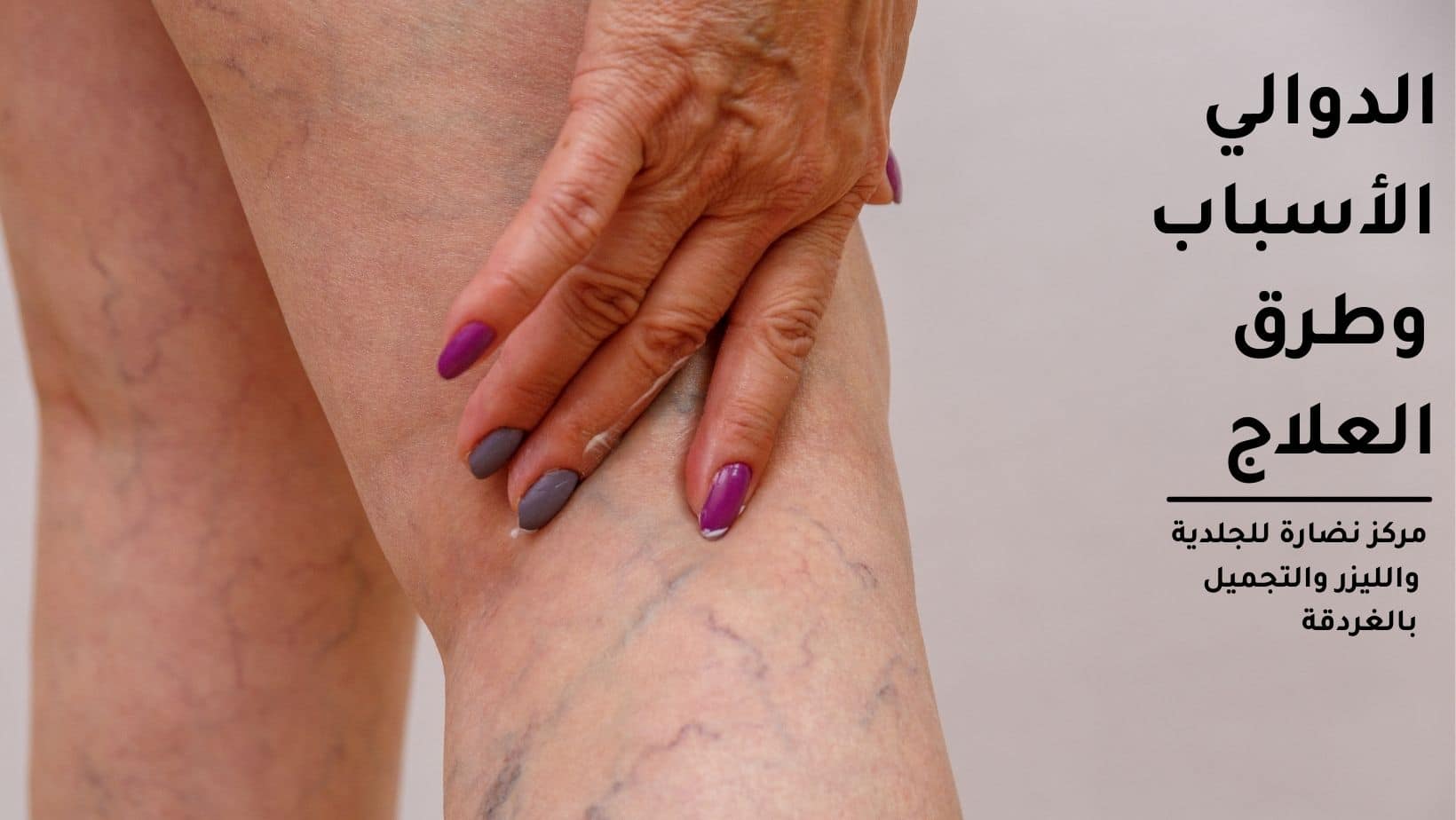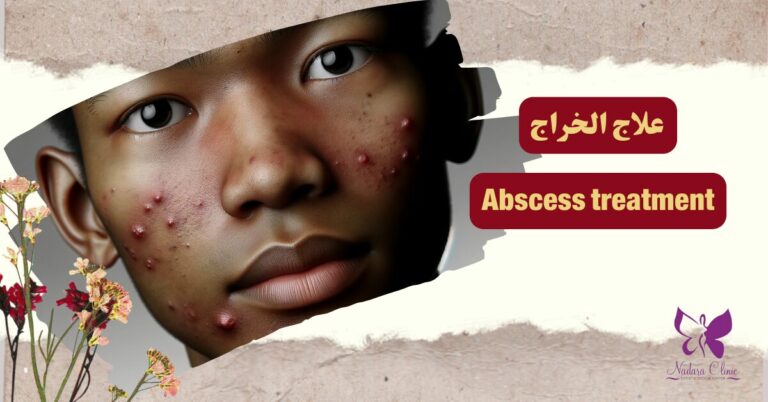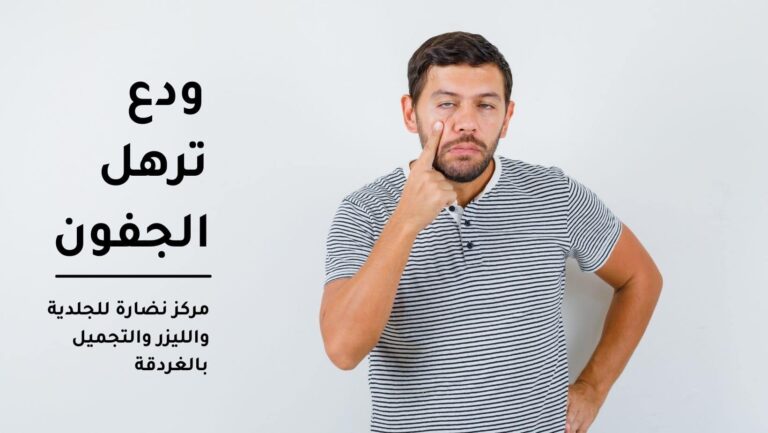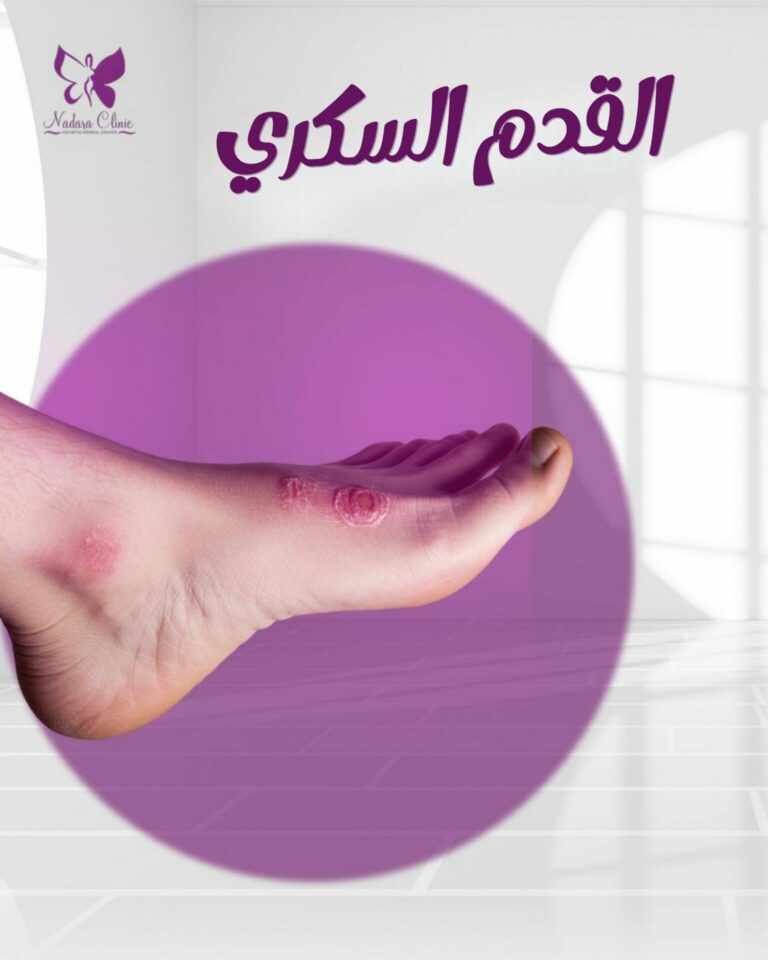If you have swollen and swollen veins, especially in your legs and feet, you may have varicose veins.
The surgeons at Nadara Skin, Aesthetic and Laser Center in Hurghada offer effective treatment for such injuries.
In this article, we will learn about the causes of varicose veins, and are they dangerous? And what are the ways to treat it?
What are varicose veins?
Varicose veins are defined as a change in the size of the veins. They may appear enlarged blue or dark purple, and may be lumpy or twisted in appearance.
Causes of the appearance of varicose veins
Varicose veins develop and enlarge as they weaken, and the tiny valves inside them stop working properly.
Blood flows smoothly to the heart in healthy veins, and blood is prevented from flowing backward through a series of small valves that allow blood to pass through.
If the valves are weak or damaged, blood can flow backward and pool in a vein, eventually causing the veins to swell and enlarge.
Varicose risk factors
Certain factors can increase the chances of developing varicose veins and include the following:
- sex
Women are more susceptible to varicose veins than men.
Recent studies suggest this is because female hormones tend to relax the walls of the veins, making the valves more likely to leak.
These changes may be caused by pregnancy, premenstrual syndrome, or menopause.
- Having a family history of infection in a family member
The injury may be caused, in part, by inherited genes.
- the age
The veins start to lose their elasticity, with age, the valves inside them stop working as well.
- overweight
Excess weight than normal causes pressure on the veins, which leads to increased pressure on the valves.
- Standing for long periods
Some research suggests that jobs that require prolonged standing may increase the risk of injury, because blood doesn't flow easily.
- pregnancy
The amount of blood increases to help support the growing fetus, which puts pressure on the veins.
Increased levels of hormones also cause the muscle walls of blood vessels to relax.
Varicose veins may also develop when the uterus begins to grow, as the expanding uterus puts pressure on the veins in the pelvic area.
Pregnancy can increase the risk, but most women find that their veins improve significantly after giving birth.
In rare cases, the infection may also be caused by:
- Previous blood clot.
- Tumor in the pelvis.
- Abnormal blood vessels.
Symptoms
Signs of infection appear in the following:
- Pain and heaviness in the legs.
- Swollen feet or ankles.
- Throbbing or burning in the legs.
- Leg cramps, especially at night.
- Dry skin, feeling itchy.
- Lipoid scleroderma, in which the fat under the skin above the ankle can become hard, causing the skin to shrink.
- Eczema rosacea, or dermatitis.
- restless leg syndrome.
- Leg cramps when standing up suddenly.
These symptoms increase and appear worse during warm weather.
You can also read : Rhinoplasty.
Varicose types
There are several types and they include:
- Varicose veins
They are close to the surface of the skin and thick, often long, and can look irritating and cause pain.
- Retinal varicose veins
The veins are red, sometimes clustered together in a network.
- Varicose telangiectasia
Known as thread or spider veins, these are small groups of blue, or red veins that sometimes appear on the leg or face.
This type is not harmful, and unlike varicose veins, they do not cause swelling under the surface of the skin.
Complications
Varicose veins can cause complications because they severely stop blood flow.
Most affected people will not develop complications until several years after the first symptoms appear.
These complications include:
- bleeding
Bleeding close to the surface of the skin can sometimes occur in the event of an impact or a cut of the leg. This bleeding may be difficult to stop.
You should lie down, raise your legs, and apply direct pressure to the wound.
Immediately contact the surgeon at Nudra Dermatology, Cosmetic and Laser Center in Hurghada, if the bleeding does not stop.
- blood clots
If blood clots form in veins just below the surface of the skin (superficial veins), conditions such as:
- Thrombophlebitis (Swelling or inflammation in the leg veins).
- Deep vein thrombosis, which can cause leg pain and swelling, and may lead to serious complications such as pulmonary embolism.
- sores
Some painful sores form on the skin near varicose veins, especially in the ankles.
It usually begins as a discolored spot on the skin before the ulcer appears.
Diagnosis
The surgeons at Nadara Skin, Plastic and Laser Center in Hurghada examine the patient for a comprehensive physical examination, including the legs while standing, to monitor swelling.
He may also recommend some tests, such as a leg ultrasound.
These waves check blood flow through the valves in the veins, and they also help detect a blood clot.
You can also read : leather patch.
treatment
Varicose veins don't always need treatment, unless they're bothering you, and it's usually necessary to:
- Relieving symptoms if they are causing you pain.
- Treating complications such as ulcers or skin discoloration.
The treatment steps include following a specific plan developed by the surgeon at the Nadharah Center and includes the following:
wear compression stockings
The doctor recommends wearing stockings after the examination as they are not suitable for everyone, and they help to feel comfortable and relieve pain.
These stockings are specifically designed to compress the leg firmly to improve circulation, and are often narrow at the ankle and gradually become looser as you move up the leg.
If you are pregnant and have varicose veins, you should wear these stockings throughout your pregnancy as recommended by your doctor.
And you may need to wear them for the rest of your life if you have deep venous insufficiency (blockage in the valves).
If it causes dry skin on the leg, you can apply some moisturizing cream before wearing it, and it should usually be replaced every 3 to 6 months.
If the varicose veins need further treatment or are causing complications, the type of treatment will depend on your overall health, and the size and location of the veins, as well as their severity.
Other treatment methods
thermal ablation
One of the first advanced treatments is thermal ablation, and this involves using energy from either high-frequency waves (RF) or lasers.
- RF
This type of treatment involves heating the varicose veins using high-frequency energy. The vein can be accessed through a small cut just above or just below the knee.
The surgeon guides a narrow tube called a catheter into the vein using an ultrasound scan and inserts a probe into the catheter to send radiofrequency.
This heats up the vein until its walls collapse and close, and once the vein is closed, blood returns to the healthy veins normally.
A thermal ablation can be performed under local or general anesthesia.
You may need to wear compression stockings for up to a week after the procedure is over.
In rare cases, it causes some short-term side effects, such as numbness and tingling.
- laser treatment
Laser treatment involves the same steps as thermal ablation, then a small laser is passed through the catheter and placed at the top of the varicose veins.
The laser sends short bursts of energy that heat the vein and close it.
It is then slowly pulled along the vein using ultrasound to guide it, allowing the vein to be completely closed.
General or local anesthesia is also used as in thermal ablation.
You may feel some pain in the leg after the operation, and some painful bruising may appear in the affected areas.
The nerve can be injured, but it's usually only temporary and goes away quickly.
Foam sclerotherapy
If thermal ablation treatment is not suitable for you, the surgeon at Nadara Skin, Aesthetic and Laser Center in Hurghada will usually recommend another type of treatment called sclerotherapy.
This treatment involves injecting a special foam into the veins, which helps close them.
This type of treatment may not be appropriate if you've previously had DVT.
More than one vein can be treated in the same session under local anesthesia.
After treatment, varicose veins begin to fade after a few weeks as strong veins take over the role of a damaged vein that is no longer filled with blood.
You may need treatment more than once before the vein fades, and there is a chance that it will reappear.
Sclerotherapy can cause some side effects including:
- headache;
- Changes in skin color (brown spots on the treated areas).
- Blood clots in the veins of the other leg.
You can return to work immediately after the treatment, and you do not need a recovery period.
Surgery
The patient may resort to surgery when other treatments are not appropriate.
The surgeon recommends another type of treatment called ligation and stripping to remove the affected veins.
This technique involves making two small incisions. The first is near the groin at the top of the varicose veins and is about 5 cm in diameter.
The second, smaller incision is down the leg (usually around the knee), in which the upper part of the vein is constricted and completely closed.
A thin, flexible wire can be passed through the lower part of the rosette and pulled and then removed by the doctor through the lower incision in the leg.
The blood flow in your legs will not be affected by the surgery, because the veins deep within the leg will take over the role of the damaged veins.
Tying and stripping can cause pain and bruising, and rarely, any more serious complications.
You need up to 3 weeks of rest to recover before returning to work.
You can also read : Surgical suture.
Modern treatments for varicose veins
Light powered phlebectomy
This type of treatment is relatively new, and one or two incisions can be made in the leg.
The doctor places a light called an endoscope light under the skin so he can see which veins need to be removed.
Before removing the affected veins, the affected veins are cut through the incisions using a suction device.
The surgeon uses general or local anesthesia according to the patient's condition.
Methods of prevention
Some evidence suggests that varicose veins can worsen or stop new veins from forming entirely. There are some ways to relieve symptoms, including:
- Avoid standing or sitting for long periods, and try to move or walk every 30 minutes.
- Take regular breaks throughout the day, and elevate the legs on pillows to relieve discomfort.
- Exercising regularly, as this can improve blood circulation and maintain a healthy weight.
- Eat a diet rich in fiber and low in salt to prevent swelling caused by water retention.
- Avoid wearing tight clothing around the waist, thigh, or legs as it reduces blood flow.
- Avoid high-heeled shoes.
In conclusion, the methods of treating varicose veins differ according to the patient’s condition. Visit the surgeons at the Nadara Dermatology, Cosmetic and Laser Center in Hurghada.
The doctor will prescribe the appropriate type of treatment for you after consulting and carefully examining you.






